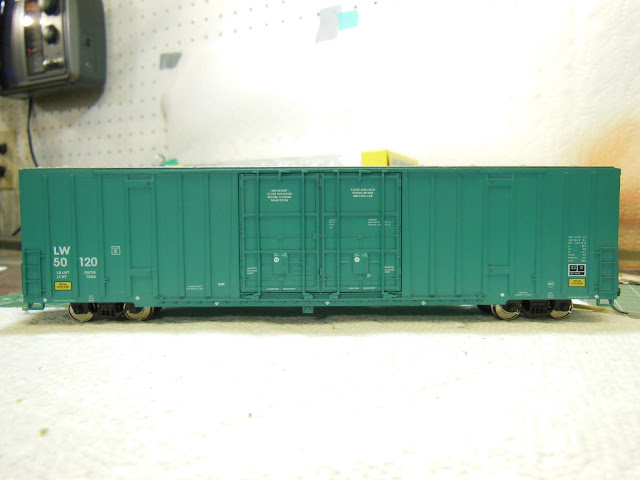Well anyway, the moratorium idea sort of started to unravel a few weeks ago, when I saw a photo of a Watco GP35, that was in Union Pacific paint. I thought something like that would fit in real nicely on the JSSX as a leaser. So, I had a quick look on ebay, and sure enough there was one on there that should make for a really good starting point. So just this once (right?) the moratorium was lifted.
And the Kato model arrived a couple of weeks ago.
I had been concerned that maybe it was one of the older versions, with that bronze strip along the sill that unreliably tried to carry the current from the wheels to the motor. I thought maybe I was going to have to do some work to replace the strip with wires, but that turned out not to be the case. The wires have been factory installed, so all I had to do was plug in a DCC decoder. I robbed it from that same SD38 that I took the motor from.
This little guy runs real nice. But, everything is not as rosy as it could have been with this engine.
The previous owner, for some reason, saw fit to glue every single handrail stanchion to the body. And from the looks of things, he must have bought the glue at a deep discount price because he certainly used lots of it. There's even a drop of glue in the middle of one of the doors on one side. This is all going to make weathering much more difficult for me as I won't be able to remove the handrails.
Oh well, onward and upward...I'll post more about this locomotive at later dates as things progress. But I'm basically looking at it as a fall or winter project.
I also busied myself this week working on a DT&I 86 foot boxcar. I replaced the wheels with metal ones, and added the coupler conversion kit made by Walthers. I don't think that aftermarket kit is available any more, but if you can find one it sure is a lot better for these boxcars than the original Athearn coupler/drawbar system
Then I got busy with the weathering. Here's a look at the results after fading, rusting, scratching and patching...
DT&I 26020 looks ready to be spotted at the parts plant. Fortunate that there was no trailer parked at the loading dock in the foreground to block the view.
A look from behind the fence over on South Industrial Blvd. shows the other side of this 86 foot car waiting for the train crew to pick up a RailBox before heading over to the parts plant.
And a view from rooftop of the warehouse across the street.





















